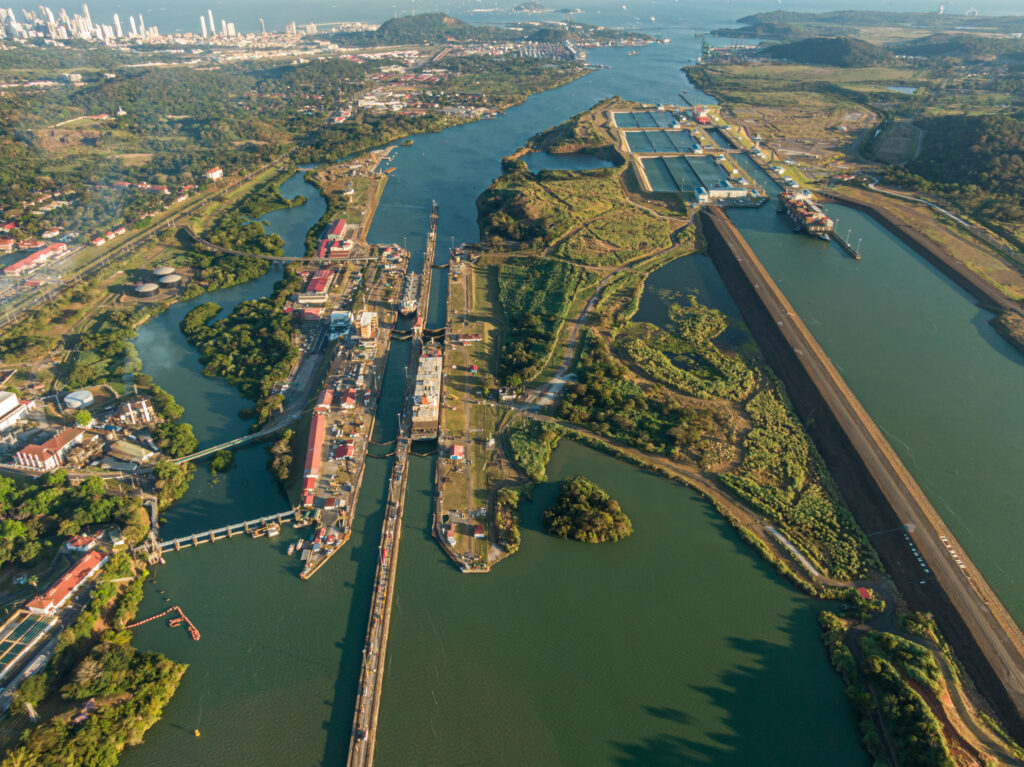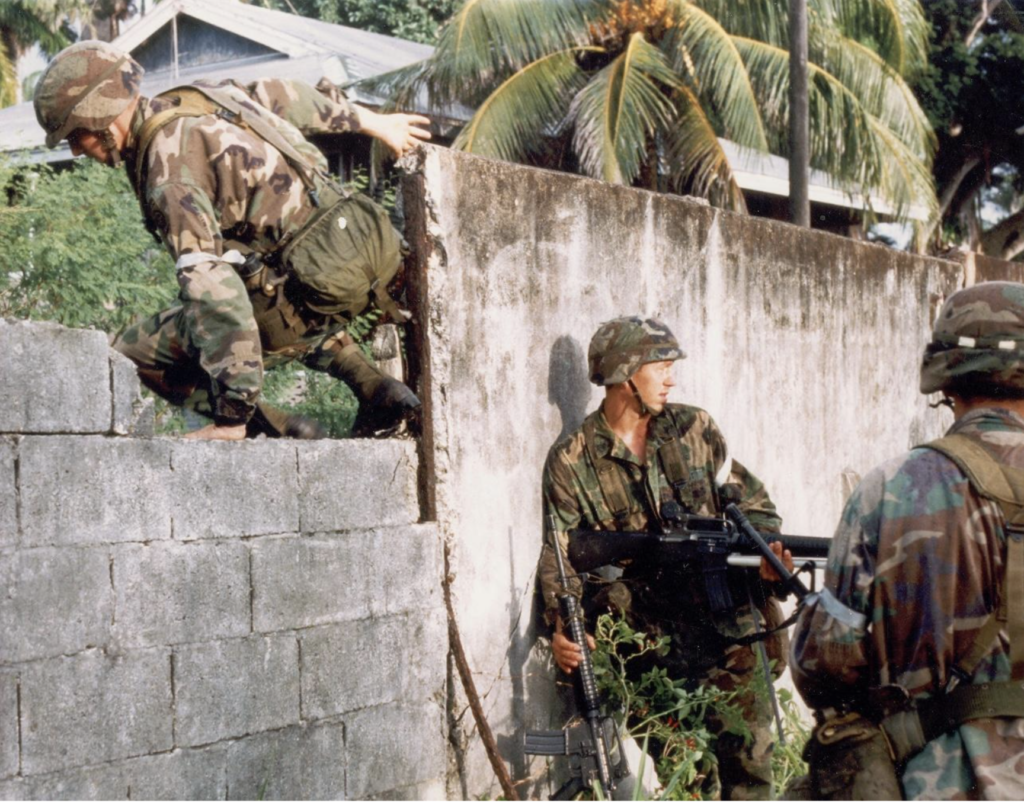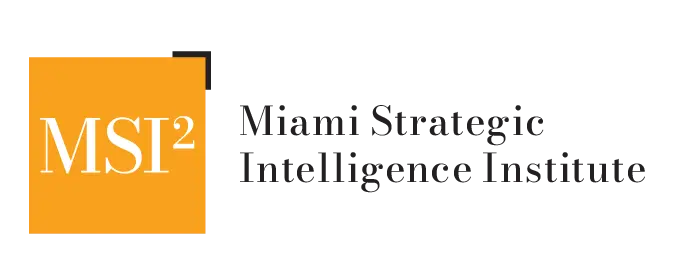04 May Reasserting Presence at the Crossroads of the Americas: Evaluating U.S. Military Involvement in Panama
By,
Jose Adan Gutierrez, Senior Fellow, MSI²
Executive Summary
Panama and the United States have maintained a strategic alliance centered on the Panama Canal since the signing of the Torrijos–Carter Treaties in 1977, which enshrined a Neutrality Clause guaranteeing open and non‑discriminatory access for all nations in peace and war.
Under these treaties, Panama assumed full responsibility for Canal operations and defense on December 31, 1999, while the U.S. retained the right to unilaterally protect its neutrality if threatened. Post 2000, Panama has hosted several U.S. military deployments—including planned use of former bases such as Howard Air Force Base—alongside annual bilateral PANAMAX exercises, and ongoing special operations and border security training with U.S. Special Operations Command South. At the crossroads of the Americas, a battle for regional dominance is underway, pitting the U.S. and China in a high-stakes clash for influence.
Introduction
Because of the Canal, the small Central American country of Panama finds itself at the crossroads of the ever-increasing conflict between the two most significant economic and military world powers: the United States and Communist China.
Recently, the United States and the Republic of Panama signed a Memorandum of Agreement allowing U.S. troops to continue deploying to the Canal area. Although this is actually not the first such agreement between the two nations since 2000, the presence of U.S. military forces in Panama, albeit not permanent, raises significant strategic and political questions. Proponents contend that increased military cooperation will enhance regional security, protect critical infrastructure like the Panama Canal, and counterbalance rising influences, especially from an expansionist Chinese Communist Party. Critics, however, warn that continuous U.S. military involvement might infringe on Panamanian sovereignty and risk the militarization of domestic institutions— a scenario that echoes the region’s history of military coups and repressive regimes.
This article examines both dimensions, drawing lessons from history to inform policy debates of today.

Historical Background and Lessons Learned
The December 1989 U.S. military intervention, known as Operation Just Cause, was launched to remove General Manuel Atonio Noriega from power. Noriega, once a U.S. intelligence asset, had become an autocratic leader heavily involved in drug trafficking. His regime posed a growing threat to U.S. personnel and interests, and it jeopardized the orderly transfer of the Panama Canal to Panamanian control. At the time, the U.S. government was unwilling to hand over the Canal—an essential global trade route—to a corrupt, narco-trafficking military regime. This made it imperative that Panama transition to a democratically elected, civilian government before assuming control. The intervention ultimately led to Noriega’s capture and the dismantling of the Fuerzas de Defensa de Panamá (PDF), setting the stage for restoring civilian rule.

This episode is part of a broader regional legacy where armed forces have repeatedly overstepped civilian control, often resulting in repression and human rights abuses. Such experiences underscore the importance of ensuring that any future security cooperation does not enable the reemergence of militarized governance or undermine democratic institutions in Panama.
Pros of a Continuous U.S. Military Presence
1. Enhanced Regional Security and Strategic Deterrence:
A strategic U.S. presence, such as in the PANAMAX series of exercises, helps to fortify Panama’s security architecture, deter adversaries, and ensure the uninterrupted operation of the Panama Canal—a vital conduit for global commerce and U.S. national interests. Notably, rotational U.S. forces also serve as a firm visual counter to China’s rapid expansion in Panama and the broader region. In a recent visit to Panama, Secretary of Defense Pete Hegseth stated that U.S. military forces’ presence not only demonstrates a show of force but also reaffirms U.S. policy by preventing rival military powers like China from creating wedges between the United States and its regional allies.
2. Improved Interoperability:
Joint exercises and specialized training with U.S. forces can modernize Panama’s counterterrorism and border security capabilities, facilitating smoother intelligence sharing and operational coordination.
3. Economic and Logistical Benefits:
Protecting the canal and its logistical network helps stabilize regional trade, benefiting both U.S. and Panamanian economic interests. It is key to understand that China’s primary means of establishing a wider role both in Panama as well as in the rest of the region is primarily economic, political, and diplomatic. Thus, the US must also have a comprehensive strategy that includes all instruments of national power in the area, not just the military. Beyond power projection, both the United States and the region will significantly benefit from renewed US investment and infrastructure development. Any gap the U.S. leaves—economic, military, political, or informational—will be swiftly seized by China, eager to expand its foothold in the region. U.S. companies must take bold, proactive steps to compete head-on in Latin America—or risk losing ground to global rivals.
Cons and Concerns Over Permanent Bases
1. Sovereignty and National Pride:
Some left-leaning, nationalist political parties in Panama view a renewed U.S. military footprint as a regression that infringes on national sovereignty, evoking memories of past interventions and potentially igniting domestic resentment. A permanent U.S. presence or extensive military training for local police, they claim, risks fostering a militaristic culture. The militaries of several countries in the region do have a checkered history of remaining under civilian leadership. When armed forces have gained excessive power, they have, in many cases, seized control from civilian authorities, leading to coups and, in some instances, atrocities against their own populations. Noriega’s PDF is but one example.
2. Diplomatic Fallout:
Rotational U.S. forces have contributed positively to the security of the Canal. However, establishing permanent U.S. bases in Panama could strain regional relationships and fuel anti-American sentiment, handing political ammunition to leftist regimes like Cuba and Venezuela in their ongoing efforts to destabilize the Western Hemisphere.
Training the Panamanian Police: Benefits and Risks
Advantages:
- Professionalization:
U.S. special forces training can improve law enforcement efficiency, enhance counterterrorism capabilities, and reduce response times.
- Enhanced Interoperability:
Aligning Panamanian police procedures with those of U.S. forces fosters closer coordination during joint operations.
Risks:
- Over-Militarization:
Specialized tactical training may transform a civilian police force into a quasi-military structure, undermining community-based policing and escalating violence.
- Historical Precedents:
Empowered military structures in Latin America have repeatedly overstepped democratic bounds and sometimes seized political power through coups.
- Potential for Mission Creep:
Training originally aimed at counterterrorism and drug interdiction might expand to other operations, leading to broader, less accountable uses of force.
Balancing Security and Sovereignty: A Delicate Trade-off
The challenge for policymakers is to strike a balance between enhanced security and the preservation of the national self-determination of a regional ally. Strategies may include:
- Conditional Cooperation:
Continue limiting U.S. military involvement to temporary, rotational deployments by invitation rather than establishing permanent bases.
- Clear Institutional Boundaries:
In addition to Canal security, counter terrorism, and related training, police training should also prioritize community-oriented tactics and strong civilian oversight to avoid an over-reliance on militarized approaches.
- Ongoing Bilateral Dialogue:
Maintain regular consultations between Panamanian and U.S. officials to monitor impacts and address concerns in real time.
Conclusion
Panama’s strategic position—hinging on the globally critical Canal—places it squarely at the crossroads of an escalating conflict between the United States and Communist China. The Canal is not only central to Panama’s economy but also to the security interests of both world powers. A continuous visible U.S. military presence acts as both a deterrent to aggressive Chinese expansion and a clear statement that the U.S. will challenge any effort to introduce rival military forces between itself and its regional allies.
Reasserting a U.S. military presence in Panama and intensifying police training through special forces offer notable advantages in security, interoperability, and economic stability. Critically, the rotational U.S. forces send a loud and unequivocal message to China’s Communist Party: the United States will forcibly challenge any attempt to create wedges between the U.S. and its regional allies. However, these benefits must be carefully balanced against significant risks, especially the erosion of sovereignty, the potential for domestic militarization, and the historical precedent of military overreach in Latin America. Past U.S. interventions and the legacy of repressive regimes serve as powerful lessons. A measured, conditional approach —with strong civilian oversight and ongoing dialogue— is essential to enhancing security while safeguarding Panama’s democratic institutions, regional stability, and the Neutrality of the Panama Canal.
References
Atlantic Council. (2025, January 15). The US is right to be concerned about China’s influence over the Panama Canal. https://www.atlanticcouncil.org/blogs/new-atlanticist/right-to-be-concerned-about-chinas-influence-over-the-panama-canal/
GAO. (1979). Study by the staff of the U.S. Government Accountability Office: Panama Canal Commission to replace the Canal Zone Government. U.S. Government Accountability Office. https://www.gao.gov/assets/id-79-33.pdf
History.com Editors. (2009, January 30). Panama Canal turned over to Panama. History.com. https://www.history.com/this-day-in-history/December-31/panama-canal-turned-over-to-panama
Joint Task Force‑Bravo. (2025, April 4). JTF‑Bravo completes PANAMAX‑Alpha Phase 0 2025. U.S. Southern Command. https://www.southcom.mil/MEDIA/NEWS-ARTICLES/Article/4147570/jtf-bravo-completes-panamax-alpha-phase-0-2025/
JTF‑Bravo Public Affairs. (2025, March 21). Joint Task Force‑Bravo to Participate in PANAMAX‑Alpha Phase 0 Exercise in Panama. https://www.jtfb.southcom.mil/Media/Press-Releases/Display/Article/4131433/joint-task-force-bravo-to-participate-in-panamax-alpha-phase-0-exercise-in-pana/
Office of the Historian. (n.d.). Milestones: 1977–1980: The Panama Canal and the Torrijos–Carter Treaties. U.S. Department of State. https://history.state.gov/milestones/1977-1980/panama-canal
Reuters. (2025, April 9). US recognizes Panama’s sovereignty over canal, Panama says after talks. https://www.reuters.com/world/americas/panama-should-secure-canal-with-us-not-china-hegseth-says-2025-04-09/
The Guardian. (2025, April 12). Panama opposition party accuses US of ‘camouflaged invasion’. https://www.theguardian.com/world/2025/apr/12/panama-hegseth-us-invasion-canal
U.S. Department of Defense. (2025a, April 4). U.S. Special Ops Conduct Combined Training With Panama, Formalize Commitment. https://www.defense.gov/News/News-Stories/Article/Article/4150118/us-special-ops-conduct-combined-training-with-panama-formalize-commitment/
U.S. Department of Defense. (2025b, February 18). First official U.S.–Panama special operations forces talks. https://www.defense.gov/News/News-Stories/Article/Article/4146907/us-special-ops-conduct-combined-training-with-panama-formalize-commitment/
U.S. Department of Defense. (2025c, March 24). Hegseth says U.S. partnering with Panama to secure Canal, deter China. https://www.defense.gov/News/News-Stories/Article/Article/4150935/hegseth-says-us-partnering-with-panama-to-secure-canal-deter-china/
United States Department of State. (n.d.). Panama Canal Treaty of 1977. https://2001-2009.state.gov/p/wha/rlnks/11936.htm
United States invasion of Panama. (2025). In Wikipedia. https://en.wikipedia.org/wiki/United_States_invasion_of_Panama
Wikipedia. (2025a). Torrijos–Carter Treaties. https://en.wikipedia.org/wiki/Torrijos–Carter_Treaties
Wikipedia. (2025b). Howard Air Force Base. https://en.wikipedia.org/wiki/Howard_Air_Force_Base
The Military Report. (2025, April 11). US, Panama sign agreement allowing limited US military access along canal. https://themilitaryreport.com/latin-america/us-panama-sign-agreement-allowing-limited-us-military-access-along-canal/
